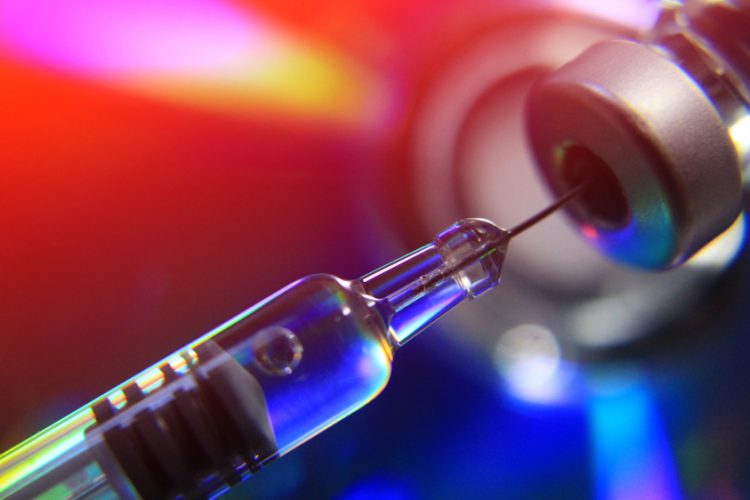Vaccine slows loss of insulin production in type 1 diabetes genetic subgroup
Posted: 1 June 2021 | Hannah Balfour (European Pharmaceutical Review) | No comments yet
In a Phase II trial, injecting GAD-alum into the lymph nodes of newly diagnosed type 1 diabetes patients with a genetic variant slowed insulin production degradation.


In a clinical trial evaluating whether an immunotherapy could prevent the destruction of insulin-producing cells in patients with type 1 diabetes, participants with the HLA-DR3-DQ2 genetic variant did not lose insulin production as quickly as the other patients.
The trial evaluated whether injecting the glutamic acid decarboxylase (GAD) protein into the lymph nodes of patients recently diagnosed with type 1 diabetes could preserve the body’s production of insulin.
In type 1 diabetes, the body’s immune system attacks the Beta cells in the Islets of Langerhans within the pancreas that produce insulin. Once these cells have been destroyed, the body can no longer regulate its blood sugar level, so the person must take exogenous insulin for the rest of his or her life.
Researchers have been examining whether and how the attack of the immune system could be slowed or even completely stopped. One possible strategy is based on altering the immune defence by injecting a protein that the cells of the immune system react to as a vaccination. One of these proteins is known as GAD65. Professor Johnny Ludvigsson at Linköping University in Sweden has studied for years whether vaccinating people who have been newly diagnosed type 1 diabetes with GAD could make the immune system more tolerant and thus stop it from damaging the insulin-producing cells, so that the body can continue to form some insulin.
“Studies have shown that even an extremely small production of insulin in the body is highly beneficial for patient health. People with diabetes who produce a certain amount of insulin naturally do not develop low blood sugar levels, hypoglycaemia, so easily. They have also a lower risk of developing the life-threatening condition ketoacidosis, which can arise when the insulin level is low,” said Professor Ludvigsson, senior professor in the Department of Biomedical and Clinical Sciences at Linköping University.
Professor Ludvigsson led DIAGNODE-2, a randomised and double-blind clinical Phase II study in which researchers investigated the effect of three GAD-alum (Diamyd) injections, given at one-month intervals, into the lymph nodes of 109 young people with recently diagnosed type 1 diabetes compared to placebo. The natural insulin production of the participants was measured at the start of the study and again after 15 months. Several other outcome measures were also followed, such as change in long-term blood sugar levels (HbA1c), and how much supplementary insulin the patients needed to take every day.
Previous studies of immunotherapy in diabetes have suggested that genetic factors play a role in how patients respond to the treatment. This led the researchers in DIAGNODE-2 to look at several variants of HLA genes. These genes code for proteins located on the surface of some cells which present proteins to immune system cells. If the protein fragment exposed in this way comes from, for example, bacteria, the immune system should form antibodies against the foreign protein. However, the immune system sometimes reacts against the body’s own substances and certain types of HLA are associated with an increased risk of type 1 diabetes. The HLA variant HLA-DR3-DQ2 exposes the GAD65 protein to cells of the immune system and patients with this variant often form antibodies against GAD65 at an early stage of the disease. Around half of the participants in the study had the HLA-DR3-DQ2 variant.
For the complete patient group, there was no difference between treatment and placebo in the degree to which insulin production was preserved. GAD-alum did, however, have a positive effect for the subgroup of patients who had the DR3-DQ2 variant of HLA genes. “The patients in the subgroup with the DR3-DQ2 type of HLA genes did not lose insulin production as quickly as the other patients. In contrast, we did not see any significant effect in the patients who did not have this HLA type,” reported Ludvigsson.
No undesired effects that could be related to treatment with GAD-alum were seen during the study.
“Treatment with GAD-alum seems to be a promising, simple and safe way to preserve insulin production in around half of patients with type 1 diabetes, the ones who have the right type of HLA. This is why we are looking forward to carrying out larger studies, and we hope these will lead to a drug that can change the progress of type 1 diabetes,” concluded Ludvigsson.
The study was published in Diabetes Care.
Related topics
Biologics, Clinical Trials, Drug Development, Drug Safety, Genomics, Immunisation, Immunotherapy, Proteins, Research & Development (R&D), Vaccines








